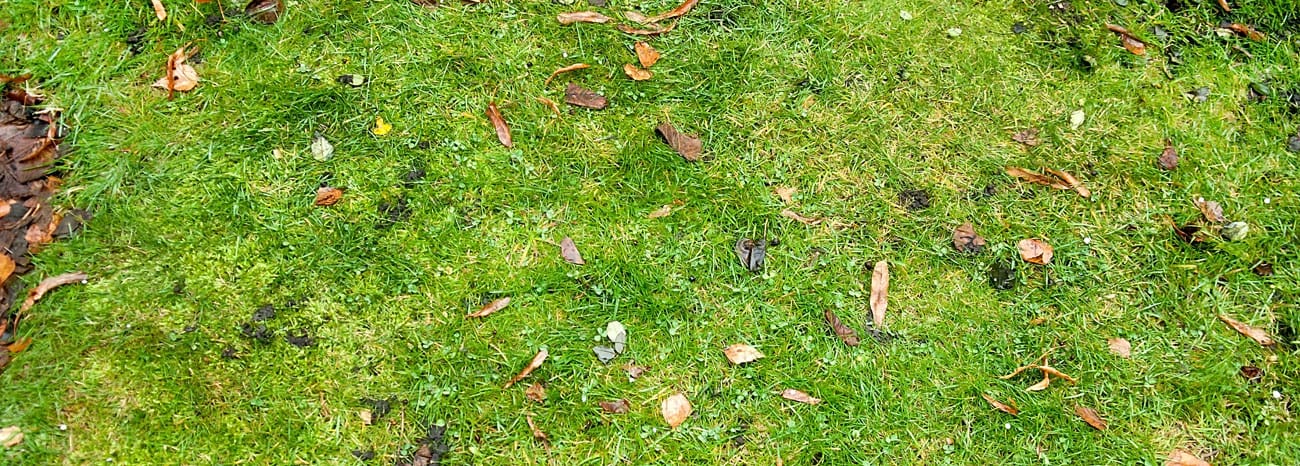Even if the groundhog sees his shadow predicting six more weeks of winter, an early spring after a long, cold winter is always welcome. The sunlight lasts a little longer each day and you start thinking about spending more time outside working on home improvement projects, gardening, and enjoying your yard.
Is it too soon to start thinking about spring lawn care? Absolutely not. It doesn’t matter if you have warm season grasses or cool season grasses growing in your lawn, both types of grass are coming out of their dormant season. The first glimmer of spring is the ideal time to start preparing for a lush, healthy lawn.
Get started with these six spring lawn care tips:
1. Rake & General Clean-up
You may think raking is only for the fall. It’s also important to rake your yard in the spring to clear up any lingering leaves and loose blades of grass. Raking your lawn will also help loosen areas of dead grass, including potential thatch layers.
What is lawn thatch? It’s a layer of dead grass that is useful during the cold season because it protects your lawn from the extreme conditions of winter.
That same protection becomes harmful when warmer temperatures arrive and the thatch is one inch thick or more, creating a friendly environment for fungus or pests. Then it’s time for “dethatching,” or the removal of these areas of dead grass. You can easily complete this with a regular rake. This is also the perfect time to pick up twigs and other items that may be lying around your yard.
2. Aerate as Needed
If areas of your lawn are compacted you may need to aerate your lawn. All this means is creating holes throughout the affected area so that water and air can reach the grassroots and get into your soil. How will you know if you need to aerate?
Heavy snowfalls can create compacted areas of lawn. Anywhere you see worn down or bare patches, thinning or discolored grass, those are spaces in need of aeration. You can use a simple lawn aerator tool.
Moyer Pro Tip: Keep an eye out for thin turf, compacted soil, or turf damaged by drought or disease.
3. Overseed
Take care of those small bare patches in your lawn by overseeding, which is spreading grass seed over your existing lawn in the areas in need of new growth. Make sure to provide the proper fertilization and keep the overseeded areas watered throughout the warm spring and summer months.
Moyer Pro Tip: Successful seeding depends on good seed-to-soil contact. Proper watering is also essential to ensuring healthy seed growth.
4. Fertilize
After you’ve completed your overseeding, you will want to take extra care to make sure the seeds take hold and grow to match the rest of your thriving, green lawn. Part of this process is to apply fertilizer to nurture the newly-planted grass seeds.
We recommend using a fertilizer with a pre-emergent herbicide in the early spring- after the seed is well established – to prevent the growth of weeds such as crabgrass. Fertilizer can also benefit your entire lawn. After the new seed shows healthy growth, you may choose to use a fertilizer with post-emergent herbicides on your existing grass for weed control.
Moyer Pro Tip: For best results apply fertilizer evenly and with care.
5. Water Your Lawn
We all know the saying, “The grass is greener on the other side of the fence.” Actually, the grass is greener where you water it.If your lawn appears thick, green and healthy, how do you know when you need to water it? Try the bounce-back test.
Take a step in your lawn and observe how quickly the blades of grass come back up. The longer it takes, or if they don’t come up at all, you need to water your lawn. The best way to water your lawn is to set up sprinklers or install an irrigation system.
Moyer Pro Tip: If possible, always water in the early morning hours, before the heat of the day sets in.
6. Mow the Lawn
Before you mow your lawn for the first time this season make sure your lawn mower is in good working condition. Don’t wait until you’re ready to cut the grass to find out you need a new spark plug. At the least, take your lawn mower in to have the blade sharpened at the start of each mowing season.
If the blade is too dull it will rip the grass instead of cutting it which can lead to disease. When your lawn is finally high enough to mow, keep the blade setting high. You only want to cut 1/3 of the length of the grass. A lawn with a height of 3-4 inches allows for deeper roots, which helps prevent weeds.
Moyer Pro Tip: Mowing during the heat of the day in dry conditions can damage the turf.
Sit Back, Relax and Call the Professionals
If everything in this spring lawn care plan sounds great but you don’t have the time or interest to do it yourself, call the Moyer Lawn Care experts. We’ve been growing healthy lawns since 1980. We know this region inside and out and we have lawn care plans to fit every budget and need. Find the plan that’s right for you.


